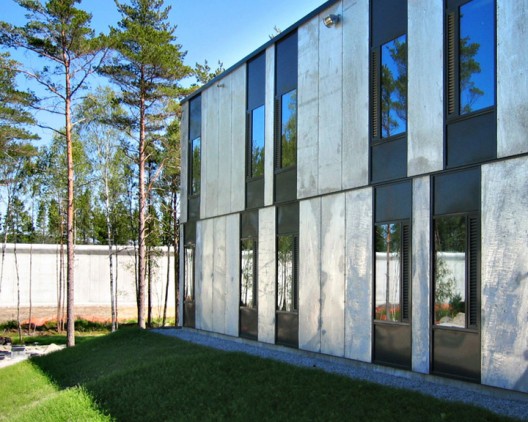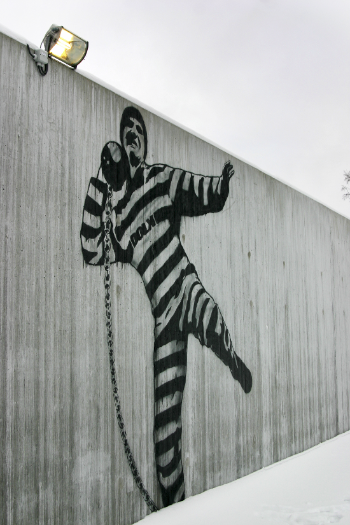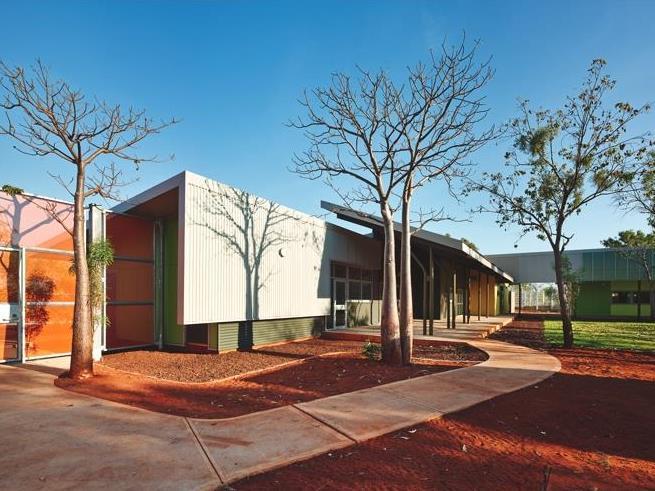West Kimberly Regional prison by TAG Architects and iredale pederson hook architects.
The West Kimberly Regional Prison, in a far flung corner of one of Australia’s most remote regions, is paving the way for innovative prison design. Instead of oppressive grey walls and security wire, the inmates here live in self-care houses, surrounded by wide open spaces, native plants and buildings that blend into the natural surrounds. The mainly Indigenous prison population also has access to education, training and rehab programs and their families, Elders, lore and culture.
In 2005, Kimberley Elders were tasked with determining how a prison might best reflect the needs of their communities, and this is what they came up with. The prison was designed with the aim of preparing inmates for the outside world, and with the ultimate goal of never having them return to prison. On a day-to-day level, prisons like this can also help to alleviate issues that are commonplace on the inside such as depression and suicide.
Superintendent Mike McFarlane in an interview with the ABC last year said, ‘Just the behavioural side of the prisoners that we’re looking after. They are generally compliant, willing to work… they are also keen on education programs and any of the programs they can get into.’
‘If you create a positive atmosphere within the prison, you get a positive things out of the prisoners.’
While the benefits of a prison such as this one can’t be denied, they can be difficult to market in a world where taxpayers don’t want to see inmates having a better life than they do. So while correctional facilities like West Kimberly do allow us to see impact of design when it comes to overall prison environment and eventual rehabilitation, don’t expect facilities like this one to be popping up all over the globe any time soon.

Halden Prison in Norway
The prison that is widely considered to be the most humane in the world is located in Norway. The Halden Prison is situated in a forest area and replicates life in the real world, attempting to get inmates used to regular life without crime. Its facilities are top notch. More than $1 million was spent on artwork, including this piece by Norwegian Graffiti Artist Dolk (pictured below). There’s a rock climbing wall, jogging trails, a soccer field and cells containing ensuite bathrooms and flat screen televisions, which are meant to be more difficult to hide contraband inside.

Work by Norwegian graffiti artist Dolk inside Halden prison.
In 2011 there were rumours that Anders Behring Breivik, the man responsible for the infamous massacre on Utøya Island and the bombing of government buildings in Oslo, killing 77 people, could be held at Halden. Some were outraged that such a man could be held in what they deemed to be luxurious facilities. But while Breivik ended up being sent to the much less elegant Ila Detention and Security Prison, a former Nazi concentration camp, the outcry still provokes the question: is prison for punishment, or rehabilitation?
The answer varies depending on who you talk to and where you are. But in the United States at least, where the number of prisons has tripled in the 40 years since strict drug sentencing laws were introduced, the number of inmates incarcerated for non-violent crimes sits at 92% and certainly many of these people can be rehabilitated.
Last year, a hunger strike across prisons in the United States protesting solitary confinement, indefinite detention and poor living conditions prompted the president of Architects/Designers/Planners for Social Responsibility Raphael Sperry to call on the American Institute of Architects to prohibit the design of spaces for killing, torture, and cruel, inhumane or degrading treatment.
In the Californian legislature last October his cry was heard, with Margaret Winter of the ACLU National Prison Project saying, ‘Many major national non-governmental organisations are now involved in the challenge to solitary confinement … an effort is underway to amend the American Institute of Architects’ Code of Ethics to prohibit the design of facilities intended for prolonged solitary confinement.’
So the ball has begun rolling when it comes to at least removing some of the inhumane conditions apparent in the US. Yet there is a world of difference between incarceration in the US and Norway, and finding a middle ground will most likely require a change in public perception too.

Glen J Santayana’s design for PriSchool.
If the fight against unethical design is still in its infancy in the US it could be unlikely that this project (pictured) from Harvard graduate student Glen J Santayana will get off the ground, but the fact that it has already gained international attention it has is a step forward for different thinking in prison architecture. In this ambitious design, entitled PriSchool, Santayana has created a prison that is integrated with a school of criminology and embedded within a normal community block.
His prison and school hybrid would address the challenges of recidivism for non-violent drug offenders and would allow prisoners to gain new skills to aid in their transition back to society. He notes in his thesis that the US has 5% of the world’s population and 25% of its prisoners, and that 67% of released inmates returned to prison within three years.
The high rate of incarceration in the USA demonstrates that those who commit crimes are not deterred by the thought of time behind bars in overcrowded, sub-stantard facilities. Prisons like West Kimberly and Halden might seem soft on crime to some, but prisoners are still denied their basic freedoms while simultaneously treated humanely; these facilities are an important step forward when it comes to teaching the rest of the world what can be done with thoughtful design, alongside education and rehabilitation programs.
And for those of us who aren’t professional architects, a video game from British developer Introversion Software Prison Architect allows gamers to build and run prisons in a similar style to SimCity.
